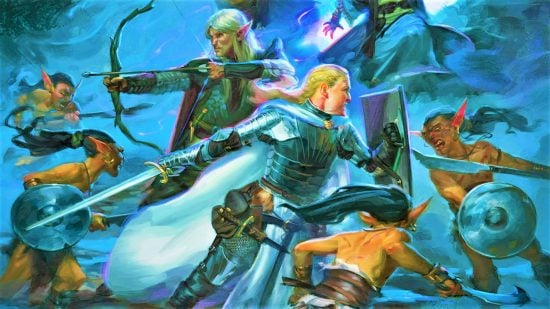Wizards of the Coast is finally dipping its toe in the virtual tabletop pool with D&D Digital. So far, the main selling point is the software’s stunning, Baldur’s-Gate-3-esque graphics. Everything has a unique animation, from fog to fireballs. Character minis manage to be more detailed than their real-life counterparts. From a purely aesthetic view, DnD Digital leaves competitors like Roll20 and Foundry in the dust. But Wizards has overlooked an important fact – simplicity is way more important than style.
Complexity puts walls up around virtual tabletops (VTTs). High levels of customisation look fantastic, but they can add hours to a DM’s already-heavy prep work. Unique animations for 5e spells add some major wow factor, but players who lack sufficient processing power will be disappointed – and slowed down. Plus, it’s unlikely an application developed with the latest version of Unreal will be cheap.
These aren’t new problems that D&D Digital is facing. Leading players in the VTT space also have the potential to overcomplicate things, and they come with their own price barriers. However, Roll20 at least has a free version – and it still (mostly) functions with minimum levels of effort.

The VTT market is becoming more saturated with each month that goes by, and there’s a clear divide among the competitors. For every high-tech marvel that promises flashy animations or immersive VR experiences, there’s a stripped-back VTT taking it back to basics.
To me, a good virtual tabletop should feel as close as possible to an in-person game of Dungeons and Dragons. And for many people, the authentic D&D experience uses little more than grid paper, DnD character sheets, and a few simple counters. I’m not so crusty that I begrudge some simple quality-of-life automation, but D&D has never needed videogame-quality visuals. The rising popularity of simplified VTTs like Owlbear Rodeo suggests I’m not alone in thinking so.
The silver lining is that, on the surface, Wizards and I share the same concerns. One D&DBeyond blog post says D&D Digital is created with three core principles in mind: fun, convenience, and authenticity. It promises a VTT where DMs have less prep to do rather than more; Wizards wants to create something that feels like D&D.
I remain sceptical, though. My perfect version of D&D is a game that’s as accessible as possible, and a high-end VTT with multiple possible barriers to entry doesn’t gel with that vision. A little like the DnD OGL fiasco, it suggests the big decision-makers overseeing D&D don’t really understand what’s important to the game. Perhaps Wizards was so preoccupied with whether they could turn D&D into a videogame, they didn’t stop to think if they should.
